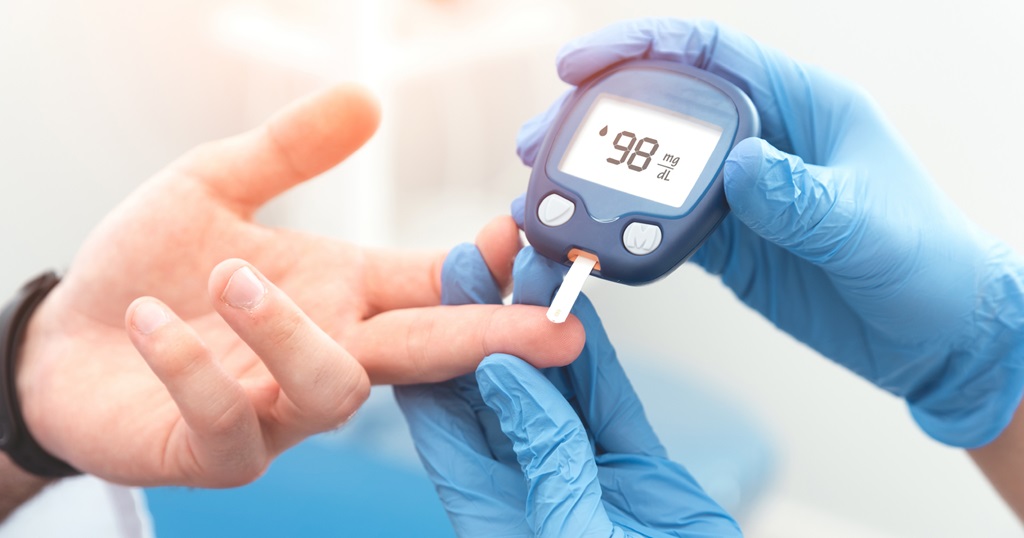A common condition that interferes with your body’s capacity to control blood sugar is diabetes mellitus. About 11.3% of Americans suffer from diabetes. Diabetes results in insufficient production of insulin, a hormone crucial for controlling blood sugar levels. Insulin facilitates the transfer of blood sugar into muscles and other tissues so that it may be utilized by them. Without insulin, blood sugar levels can become dangerously high, which over time can cause diabetic neuropathy, a condition that often affects the legs and feet.
While diabetic neuropathy can damage any neuron in the body, it most frequently affects the nerves that govern sensation in the legs and feet. Because you may not always be able to tell when you have an injury or illness that requires medical attention due to loss of sensation in your feet, a little cut or blister could develop into something much more serious.
Thankfully, there are numerous strategies to lower your chance of developing issues from diabetic neuropathy, such as keeping your feet clean, wearing shoes that fit properly, and frequently inspecting them for damage.
Why Is Foot Care Important for People with Diabetes?
Injuries should be avoided as much as possible, and they should be treated as soon as they occur. Individuals who have diabetes have a higher chance of developing diabetic foot ulcers, which can lead to consequences like infection and amputation. It is projected that between 15 and 25 percent of individuals with diabetes mellitus may develop a diabetic foot ulcer at some point in their lives.
People with diabetes may not notice a cut or injury on their foot right away, enabling it to develop infection, due to nerve damage brought on by diabetic neuropathy. Additionally, a diabetic may continue to engage in activities that exacerbate wounds due to neuropathy.For instance, a person without neuropathy might change their shoes or apply a bandage to a blister that appeared, while a person with neuropathy would not feel the blister and would just keep walking.
Due to a few medical complications, diabetes also prevents wounds from healing.Peripheral artery disease (PAD), a disorder that reduces blood flow to the arms and legs, is twice as common in people with diabetes than in the general population.Reduced blood flow might cause healing to be delayed since proper blood flow is essential to healing.
Furthermore, those with diabetes who have poorly managed blood sugar are particularly vulnerable to delayed wound healing. Blood vessel stiffness is one of the many detrimental impacts of high blood sugar levels.
How to Care For Your Feet When You Have Diabetes
Although the thought of having a diabetic foot ulcer can be daunting, there are numerous things you can do to lessen your risk of getting one.
Check and Wash Your Feet Daily
Every day, make sure to examine both sides of your feet for any new blisters, cracks, redness, or injuries that you might not be able to feel. If mobility or other problems prevent you from seeing all the angles of your feet, you can use a mirror to help you see them, or you can ask a member of your inner circle for assistance.
Daily foot washing is another way to maintain the health of your feet. Especially if you have diabetic neuropathy, make sure the water is warm but not hot by feeling it with your touch using a thermometer. Make careful to thoroughly wash your feet, but avoid soaking it. After washing your foot, give it a thorough drying.
Wear Proper Footwear
To avoid injury, it’s crucial to wear appropriate footwear at all times. Never go barefoot—even inside—as you run the risk of tripping over something sharp and getting hurt without even realizing it.
It’s also critical that your shoes fit properly. Steer clear of tight shoes that you might “wear into” or that squeak your toes together. When you get new shoes, wear them every day for little periods of time to break them in gradually.
Make sure the inner of your shoes is smooth and free of any stones or other things that could scrape against your feet before putting them on.
Take Care of Your Nails
Diabetes sufferers should maintain their toenails clipped short enough to avoid ripping them when they snag on socks or shoes. Additionally, you should cut your nails straight across to lessen the possibility of cutting yourself and getting hurt. A nail file can be used to smooth down the sharp tips of nails. A podiatrist, or medical professional who specializes in foot care, should assist you if you are unable to see or reach your feet.
Encourage Blood Flow
By wiggling your feet and toes for a few minutes at intervals throughout the day, you can promote blood flow. When sitting, try to elevate your feet as much as possible to let blood return to your heart.
See Your Provider Regularly
Your feet will be examined by your healthcare practitioner to ensure their well-being. It is best to discuss any corns or calluses you may have with your podiatrist rather than attempting to remove them—even in minor cases—at home. Along with more advice on how to maintain healthy feet, your healthcare practitioner can educate you on the activities that are ideal for protecting your feet.
When to Contact a Healthcare Provider
It is crucial that you visit your healthcare practitioner on a frequent basis if you have diabetes. However, you should schedule an appointment with your podiatrist or primary care physician as soon as possible if you experience any of the following symptoms:
You have a cut, blister, ingrown toenail, crack, bruise, or other injury on your foot, and it takes more than a few days to recover.
If any area of your foot gets hot, red, swollen, or sensitive, an infection may be the cause.
If an existing foot infection does not start to get better after taking antibiotics, or if it turns black and smells bad, it may be gangrene (tissue death).
You have an athlete’s foot-like fungal infection, particularly in between your toes.
Your toenails are getting thicker and turning yellow.
Dried blood inside a callus you find could mean there’s a wound developing underneath.
Over time, you observe that your foot’s shape changes.
You see a shift in the temperature of your feet or a loss of hair on your legs or feet.
You either lose your ability to sense touch or experience it less keenly on your feet.
Your feet’s capacity to sense heat or cold has suddenly vanished.
Your feet hurt, either tingling or burning.
You get cramps in your buttocks, thighs, or calves when you move or exercise.






